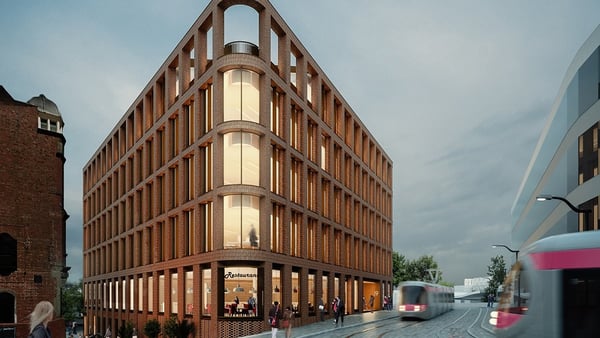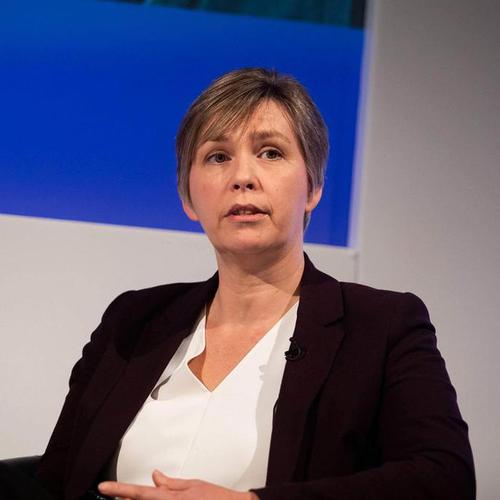Restoring social housing with connected technology
The Government is being very vocal about its pledge to ‘Get Britain Building
again’, with a target to build 1.5 million new homes. On 30 July, Secretary of State for Housing, Communities and Local Government Angela Rayner MP delivered a statement in the House of Commons on “Building the homes we need” and announced the government’s intention to publish a long-term housing strategy.
Whilst building more affordable homes is, of course, a positive step, it is crucial that social housing welfare should be higher on the agenda. We call upon the policymakers to prioritise the integration of innovative technology in this long-term housing strategy, as it is a key factor in the restoration of the social housing sector.
Registered Providers of Social Housing (RPs) are already under immense pressure, grappling with funding constraints against rising inflation to improve the quality of housing while keeping rents affordable. And while it is not clear what level of extra financial support, if any they will receive from the new Government, what is clear is that social housing providers will have to do more with what they have.
However, the integration of innovative technology presents a beacon of hope, set to have the most transformative impact in the years ahead. By applying the latest innovations in connectivity and smart devices, social housing providers can unlock new levels of efficiency, elevate the quality of social housing, and bring about a brighter future for the sector.
A legacy of challenges
For social housing providers, maintaining high standards across a large portfolio of complex dwellings is a constant balancing act. Whether a property has been erected for decades or comes from a brand-new development, many of the same issues can cause these standards to drop and create potentially harmful environments for already vulnerable tenants.
Many of these challenges are environmental in nature. Such as actively measuring temperatures for elderly residents. As well as tracking CO2 levels and indoor air quality in high- risk areas of the country. The tracking of allergens and the potential development of moulds and dangerous spores is also another key area of responsibility.
Awaab’s Law, Introduced in 2023 as part of the Social Housing Regulation Act, requires councils and housing associations to investigate and rectify instances of dampness or mould within a prompt timeframe. It was introduced at a time when the housing ombudsman reported that parts of the social housing sector were at breaking point’, with a record 1,663 public complaints and calls for evidence cases. Failings from a number of landlords, including one who left a family living in damp and mould for five years.
Intensifying the importance of this law, the new Labour Government has already indicated it plans to extend it to the private rental sector – as part of the new Renters’ Rights Bill.
Embracing the power of tech
In the ever-evolving landscape of social housing, embracing the power of the Internet of Things (IoT) can unlock a new level of efficiency and safety for both landlords and residents.
A technology solution for the social housing sector, particularly those with Multi-Dwelling Unit (MDUs) within their housing stock, can leverage cutting edge Access Points (APs) distributed throughout a large complex. Thus, ensuring every dwelling and its devices have access to a solid internet connection. In this instance, each dwelling would include its own Virtual Local Area Network (VLAN), allowing residents to onboard devices and manage their own networks.
This setup is complemented using Dynamic Pre-Shared Keys (DPSK) and a single Service Set Identifier (SSID) across the estate. This facilitates seamless roaming while keeping each resident’s connection securely confined to their private VLAN. An IoT solution such as this creates a more informed source of data for social housing providers to monitor and act upon.
While also creating digitally enhanced environments that empower residents through personalised data and smart devices.
For example, a tenant can see how much energy they’re using or track humidity levels that could lead to a mould or damp outbreak. This clearer line of communication between resident and social housing provider is key to fostering healthier and more sustainable tenancies.
The benefits of a robust IoT solution
For social housing providers, a robust, Internet of Things (IoT)-enhanced access network that uses actionable data creates a cost-effective operation.
The benefits of a robust IoT-enhanced access network include:
- Streamlining field-force operations - active monitoring and maintenance of equipment reduce repair costs and delays, ensuring timely service and inspections.
- Effortless IoT Integration - Easy-to-use dashboards for IoT services lower the effort and cost to deliver new technologies to residents.
- Reduced costs and liabilities - Enhanced visibility and active maintenance lead to lower insurance and liability costs, along with reduced repair times.
- Infrastructure for device connectivity - Supports the connection of intelligent devices, from boilers to access systems, enhancing home automation and energy management.
- Secure and simple device onboarding - Ensures residents can easily and securely connect their devices, improving digital access and inclusion.
- Complying with sustainability targets and environmental policies - Comprehensive data on energy demand and consumption gives insights on how to best implement energy efficient management. Contributing towards Net Zero targets.
Having an impact on digital poverty – an enterprise-grade wireless network addresses the ‘digital divide’ between those with access to existing and new technology and those left behind.
Building a healthy future for social housing
Wireless and IoT technologies such as access points, sensors, and smart meters address the multitude of prevailing issues in the social housing sector. Creating a more informed source of data for social housing providers to monitor and act upon. That flow of data doesn’t just elevate the social housing provider, it actively empowers residents too for digitally connected communities.
As we enter the age of a new Government, tackling the housing crisis is at the top of the agenda. However, there is no clarity on available funding for better quality and affordable homes, so social housing providers must focus on the transformative impact that connected technology can bring.






